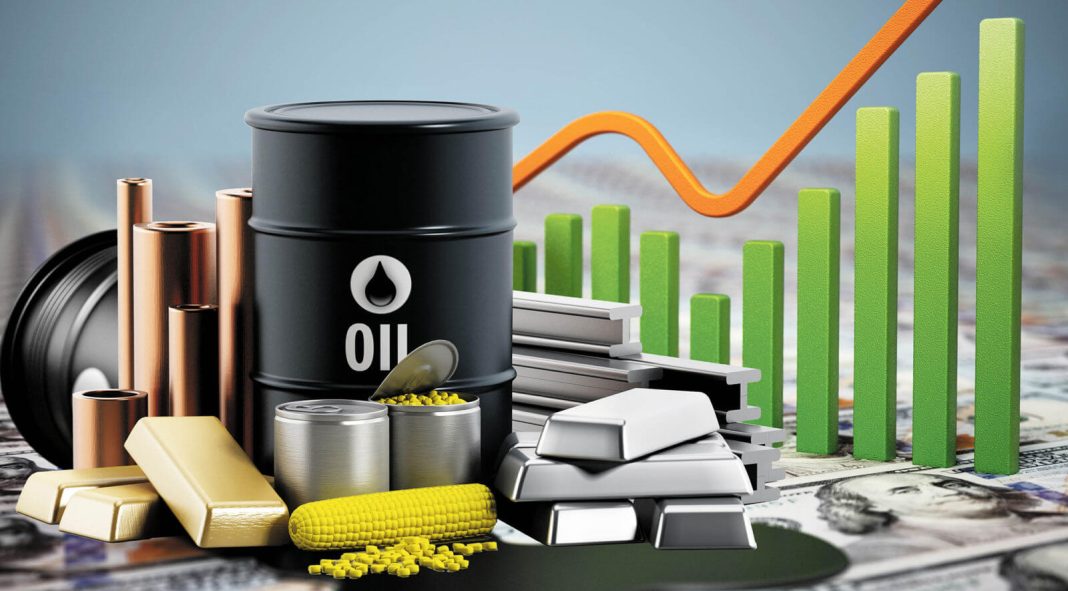 Oil Prices Decline While Gold and Silver See Mixed Results
Oil Prices Decline While Gold and Silver See Mixed Results
In the energy market, benchmark U.S. crude oil for August delivery experienced a drop of 57 cents, settling at $82.81 per barrel on Tuesday. Similarly, Brent crude for September delivery fell by 36 cents to $86.24 per barrel. These decreases can be attributed to a combination of factors, including concerns about global economic growth and the ongoing impact of the COVID-19 pandemic on oil demand.
Meanwhile, wholesale gasoline for August delivery experienced a slight decline of 1 cent, reaching $2.57 per gallon. On the other hand, August heating oil saw a modest increase of 2 cents, with prices rising to $2.63 per gallon. The natural gas market also witnessed a decrease of 4 cents, resulting in a price of $2.44 per 1,000 cubic feet.
Shifting our focus to the precious metals market, gold for August delivery encountered a decline of $5.50, settling at $2,333.40 per ounce. On the other hand, silver for September delivery experienced a slight increase of 5 cents, reaching $29.66 per ounce. September copper, however, remained unchanged at $4.42 per pound.
It is important to note that these fluctuations in commodity prices are influenced by various factors such as supply and demand dynamics, global economic conditions, geopolitical events, and market sentiment. Additionally, recent studies and expert opinions provide valuable insights into the forces driving these changes.
The global economic recovery from the COVID-19 pandemic continues to be a significant factor impacting oil prices. As countries gradually reopen their economies and travel restrictions ease, the demand for oil is expected to increase. However, concerns about new variants of the virus and potential disruptions in supply chains have created uncertainty in the market, leading to cautious investor sentiment.
Furthermore, geopolitical tensions and conflicts in key oil-producing regions can significantly impact oil prices. Any disruptions to oil production or transportation infrastructure in these areas can lead to supply shortages, thereby driving up prices. Investors closely monitor geopolitical developments and their potential impact on oil markets to make informed investment decisions.
In the precious metals market, gold is often considered a safe-haven asset during times of economic uncertainty. The decline in gold prices could be attributed to improving economic conditions and investor confidence in other asset classes. As economies recover, investors may shift their focus to riskier investments, leading to a decrease in demand for gold.
On the other hand, silver’s modest increase suggests that investors may still view it as an attractive investment option. Silver has various industrial applications and is often seen as a cheaper alternative to gold. Recent studies have also highlighted the increasing demand for silver in renewable energy technologies, further supporting its value.
It is worth noting that currency exchange rates can also influence commodity prices. The dollar’s decline against the yen and the euro can make commodities priced in dollars more attractive for international buyers. As a result, a weaker dollar can contribute to higher demand and potentially higher prices for commodities such as oil and precious metals.
In conclusion, the recent fluctuations in commodity prices reflect a complex interplay of factors including economic recovery, geopolitical tensions, supply and demand dynamics, and currency exchange rates. While oil prices experienced a decline due to concerns about global economic growth, gold and silver saw mixed results influenced by improving economic conditions and investor sentiment. It is essential for investors to stay informed about these factors and consider expert opinions to make well-informed investment decisions in the commodities market.


